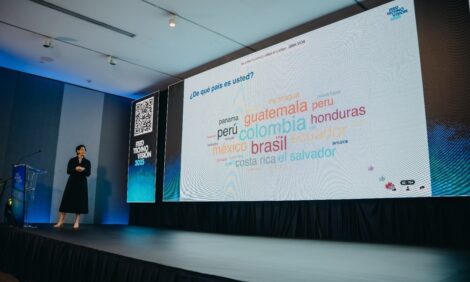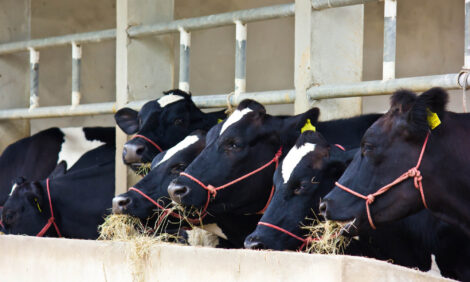



How Far Can Environmental Management Go Before Risking Health & Productivity?
Not much different in size from other dairy farms in the Netherlands, De Marke has much larger ambitions. Charlotte Johnston, TheCattleSite junior editor looks at Wageninen University's research farm.The 55 ha farm located in the eastern sandy area of the Netherlands is looking at improving its ecological footprint, whislt enhancing feed conversion efficiency.
The farm wishes to become self-sufficient, making the best possible use of farm-grown forage, reduce excretion and purchase as little feed as possible.
On top of this, the farm is aiming to have no surplus phosphate and wishes to keep nitrate less than 30 kg/ ha, to comply with current and possibly future EU nitrate regulations.
Crop rotation
With what the farm call an 'intelligent crop rotation plan', three years of grass (with white clover) is followed by two years of maize and one year of barley.
The 55 ha currently consists of:
33 ha of grass, of which 11 ha are permanent and 22 ha temporary;
16 ha of maize;
6 ha grain.
The benefit of this rotation is that it allows soil organic matter content to be maintained at a higher level with a positive affect on moisture retention capacity and rooting.
It also allows the farm to have a targeted fertiliser strategy.
Compared to other farms in the Netherlands, De Marke utilises a lot less grassland but more land for maize (both for whole and cob silage) production.
To ensure that no minerals, particularly nitrogen, are lost a catch up crop of rye grass is sewn between the rows of maize, approximately six weeks after planting.
Following the maize harvest, the rye grass continues to grow absorbing residual nitrogen.
Manure and fertiliser
Manure management can be seen in Table 1.| Table 1: Manure management (tons per ha) | ||||
|---|---|---|---|---|
| Seperated slurry | ||||
| Fermented slurry | Liquid fraction | Solid fraction | Total | |
| Grass | 50 | 32 | 1 | 83 |
| Maize | 8 | 3 | 4 | 15 |
| Barley/grass | 45 | 0 | 5 | 50 |
| Total area | 37 | 19 | 2 | 58 |
No artificial fertiliser is applied at De Marke, to keep soil nitrates down.
There are three different types of slurry available on the farm. An anaerobic digester ferments slurry, which can then be seperated into liquid or solids.
Manure is constantly turned, allowing the fermenting process to be sped up.
This allows the muck to be seperated, with the solids settling at the bottom and the fluid resting at the top. Liquid slurry is then stored in a lagoon on site and used as fertiliser which is injected into the ground for maximum absorbtion by the grass.
The solid muck is also spread.
Feed
Animals are fed on a very low input diet. The diet is high in starch levels due to the maize forage available.
On top of this, additional concentrates are bought in and cows receive 1820 kg/ yr/ cow. The concentrates bought in are low in phosphate so as not to affect the phosphate concentration of the manure.
The cows also receive a small proportion of barley in their diet - mostly because it is grown to improve soil structure.
Challenges
Monitoring at De Marke found that initially there was little effect on crop and feeding efficiency as a result of applying no chemical fertilisers. However in recent years, the effects of using no artificial fertiliser have become apparent.
As the years have progressed the quality of grass has deteriorated, this is a problem becuse it is fed back to the cows and the muck is then used to fertilise the grass.
As the cows have become more accustomed to a maize diet, which is higher in starch, rumen cell wall digestibility has fallen. This occurs as starch causes the rumen pH to fall and micro-organisms focus more on starch digestion (as opposed to plant cell wall digestion).
This wouldn't be a problem if the grass fed was of a high quality, as it would be more digestible - but at De Markes it isn't. Grass is the main source of protein for the cows, therefore cell wall digestibility is important.
Further monitoring showed that feed intake was high, whilst the energy and protein efficiency were falling - which is explained by the decrease in cell wall digestibility and analysis of the manure.
Analysis of the manure has shown that there is a large proportion of undigested feed particles present, which means the nutrients aren't broken down and therefore unutilised by rumen and off little use to the grass as a fertiliser.
This results in poor quality grass and the cycle is repeated. Cows are fed more poor quality grass, which they are unable to digest, which in turn results in undigested particles in the manure.
At the same time, it was noticed that cows were requiring a high input of feed compared to output. Which in short means that feed intake was inefficient compared to production.
In conclusion this continued monitoring identified two problems:
- the first been that cows had a high feed intake compared to milk output;
- the second was that manure quality was poor, meaning that grass and crops weren't rich enough in nutrients to be used as feed.
To confirm that the poor quality grass/ manure was the problem, De Marke fed quality grass from an outside source for a number of weeks, and found that manure quality improved significantly.
Facing the challenges
De Marke had already taken action to prevent against leaching, with the desired effect of retaining nutrients in the soil. To reduce the impact and susceptibility of leaching, the farm decided to limit cattle grazing to Spring through till Autumn, so the cattle were housed in the Winter. However this did not seem enough. Cattle are now restricted to grazing for between four and five hours a day during Spring and Summer.
Further more the farm applies no chemical fertiliser. Cattle manure is the only source of fertiliser available.
For the time being the farm has added soybean extracts to the diet with rapidly degradable carbon hydrates. While maintaining the microbial protein formation this 'speeds up' the diet.
Whilst this is satisfactory for now, it is contradictory of the farms wish to reduce excretion, make best possible use of farm grown forage and to purchase as little feed with minerals as possible.
Ideally the farm is looking for an additive to enhance rumen degradation of cell walls, but as of yet it has found nothing thats suits its needs.
Until then, the farm is wanting to repeat the experiment again to confirm results. It may be that the farm has reached the lowest possible levels of mineral supply (fertiliser and purchased feed) possible, without effecting the herd.


